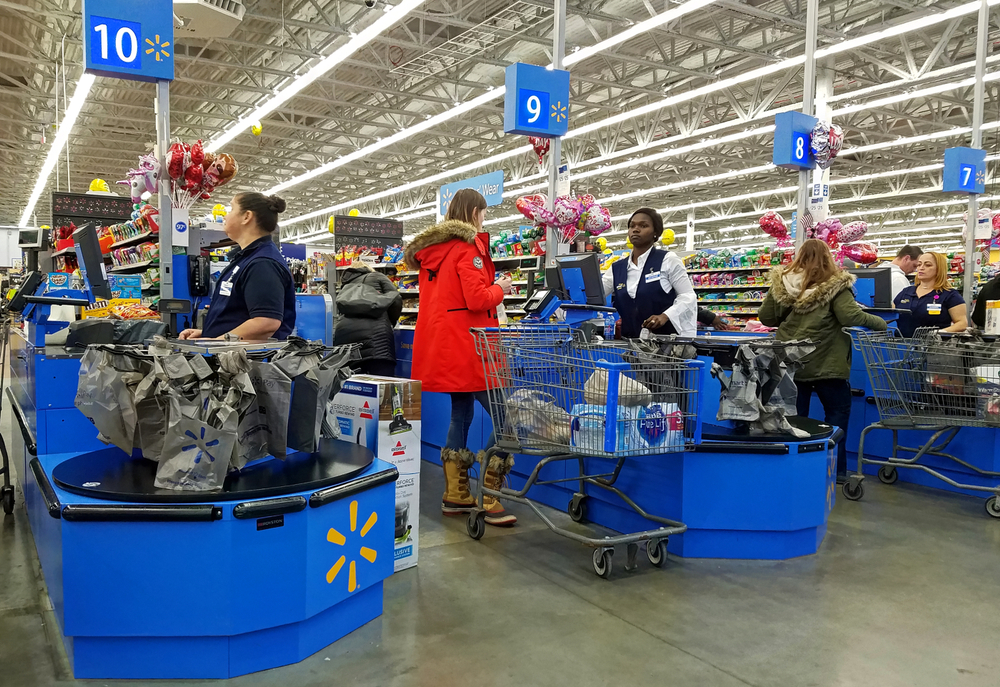Will Walmart’s changes to reduce plastic waste catch on?
Walmart promises move toward 100 percent recyclable, reuseable or compostable packaging
Not all packaging is created equal.
Go inside any Walmart and survey all the plastic packaging: There’s that flexible plastic used to box phone chargers, makeup, and socks. There are the clamshell-style plastic containers used for berries and tomatoes. And plastic shrink wrap. And plastic shopping bags.
Just because something is plastic, doesn’t mean it can be recycled.
“There are plastic items we cannot actually recycle,” said Earl Gloster, Clearwater’s director of solid waste. “It’s tricky because sometimes there’s not an end-user who wants that particular product.”
In response to a mounting plastic problem, Walmart is moving away from nonrecyclable plastics and overhauling its packaging. It’s focusing on its private label products, but encouraged national suppliers at its annual supplier forum last week to set similar package goals.
Walmart is an industry leader, the world’s largest retailer and the country’s leading grocer. But will other companies follow the chain’s new pursuit to less plastic waste?
“As a global retailer that has set an ambitious aspirational goal to create zero waste, we fully recognize that reducing plastic waste by increasing packaging circularity is an area where Walmart can lead,” Walmart’s senior vice president of global sustainability Laura Phillips said in a statement.
By 2020, Walmart says it’s going to work with suppliers to remove non-recyclable packaging material found in flimsy plastic boxes. By 2022, it has pledged that all of its private-label products will have clear recycling instructions. By 2025, the company says those products’ packaging will also be 100 percent recyclable, reusable or compostable.
“This announcement sends a positive signal to the marketplace, especially in the United States,” the Association for Plastics Recyclers CEO Steve Alexander said in a statement.
Already, there’s evidence of movement in retail’s recycling ecosystem.
Target started using the “How2Recycle” instruction label on some of its store brand products in 2013. The labels are designed to demystify how every piece of product packaging can, or cannot, be recycled.
By 2016, Walmart and Target were both using the labels. The stores’ participation encourages more brands to join, according to GreenBlue, a nonprofit in Virginia.
In 2017, just 17 of Walmart’s store-brand item suppliers signed up to include clearer recycling labels. In 2018, that number grew to more than 100. By the 2022 deadline, more than 30,000 items in Walmart will have such labeling.
“Walmart’s commitment to add the How2Recycle label to its packaging is notable because few companies make specific, public commitments to communicate recyclability,” said How2Recycle leader Kelly Cramer.
Globally, less than 14 percent of plastic gets recycled, according to industry estimates. The rest is either burned, sits in landfills or litters oceans and land.
Tampa Bay’s publicly owned waste facilities can only recycle the things manufacturers want to buy after they’ve been priced in bulk. And when the nonrecyclable trash and plastics get in the way, it makes it less likely for the desired plastics to get a shot at a second life.
Gloster, of Clearwater’s solid waste department, said he’s also pushing for consistent labeling so he can keep his facility’s plastic stream free of contaminates, which is anything (even plastics) that can’t be recycled.
Take a hand soap or shampoo bottle with a pump, for example. The bottle is recyclable, but the pump isn’t. The How2Recycle label instructs users to toss the pump and rinse and recycle the bottle. Other labels note to throw out the thin plastic wrappers on frozen pizzas and only recycle the round cardboard piece if its dry and free of grease.
Tampa Bay waste programs have adopted the slogan, “When in doubt, throw it out” to encourage people to keep nonrecyclable plastics out of the blue bins.
“The recycling facilities are set up to recognize the most common items,” said Stephanie Watson, Pinellas County’s recycling outreach and program supervisor. “Ninety-nine percent of municipalities use single-stream recycling. Everything goes into one cart. At the processing facilities, materials are separated out.”
The recycling bin at your curb should only be filled with plastic bottles and jugs, cartons, paper and flattened cardboard, metal cans, and glass bottles and jars.
That means no plastic wrap, bubble wrap, takeout containers, Styrofoam or most produce packaging. Takeout cups can’t be recycled because of the plastic that coats them, nor can PVC pipes.
Anything the machines can’t recognize, or simply doesn’t belong, clogs up the entire operation, Gloster said.
Plastic shopping bags and electrical cords can tangle inside machines and halt the line. Any container that’s not at least rinsed out and free of food can also contaminant the plastics or paper collected, making it worthless to buyers.
“There’s also people on the line picking out the things that shouldn’t be there,” Gloster said. “It adds to the processing expenses to get out the items that don’t belong.”
Since 2018, plastics have been harder than ever to sell. China, which once bought 40 percent of U.S. recycled plastics, has cut back and raised its buying standards. The more contaminants that get in the mix, the harder it is to sell plastics that meet the upped standards.
“Since the new policy, processors have not been able to sell as much as previously and the market prices are much lower,” Gloster said.
Locally, unrecycled plastics and garbage are sent to incinerators at waste-to-energy plants. The burning garbage heats water and produces steam that turns a turbine generator to produce electricity. That electricity often runs local government buildings and the excess is sold to power companies such as Duke and Tampa Electric Co.
The ashes are spread over landfills. The facilities say they monitor pollutant emissions given off by burning the mix of trash and plastic to stay in compliance with the Clean Air Act.
If Walmart follows through on its plans, it could mean less single-use, nonrecyclable plastics getting into the waste stream.

